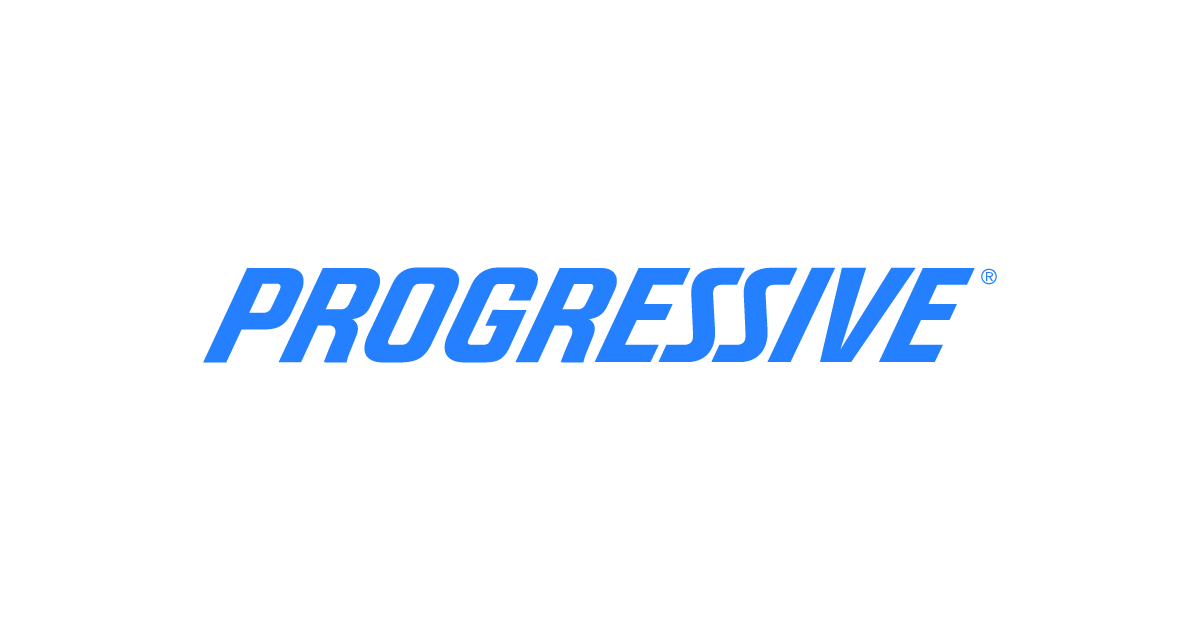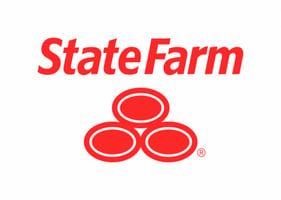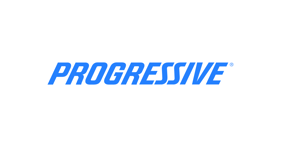Ridesharing has become a popular way for people to earn extra money, but it's caused a car insurance conundrum. Insurers weren't certain how to handle accidents that happened while a customer worked as a rideshare driver, and that led to the birth of a new product: rideshare insurance. If you work for Uber or Lyft or you're thinking about doing so, here's what to know about coverage.

Bottom Line
State Farm allows its customers to add a ridesharing endorsement to regular auto insurance. Endorsement coverage typically adds 15% to 20% to your current premium, but can save your finances in the event of an accident. The company is an industry leader in terms of customer service, which can make filing a claim less of a headache. And when drivers file a claim, they pay the smaller of their State Farm or rideshare company's deductible.

Bottom Line
Allstate offers an affordable auto insurance ridesharing endorsement for drivers on a budget. The cost of rideshare coverage depends on the type of policy you choose. For example, a rideshare endorsement may cost less than a separate rideshare policy. An endorsement pays the difference between your Allstate deductible and your rideshare company deductible in the event of an accident. Its premiums are also pretty affordable compared to those of other insurers.

Bottom Line
Progressive lets drivers add cheap rideshare insurance to an existing policy and customize coverage based on how much you want to pay. The precise amount depends on a variety of factors, including your driving record, where you live, the type of vehicle you drive, and your existing policy's coverages and limits. In the event of a crash, added rideshare coverage pays the difference between the deductible on your personal car insurance policy and your Uber or Lyft deductible.

Bottom Line
USAA is widely considered one of the best auto insurers, but it's only available to current and former military members and their families. Uber or Lyft drivers in one of these groups should check out its ridesharing coverage. Rates are fairly reasonable, and the company is known for its great customer service.
What is rideshare insurance?
Rideshare insurance is a special type of car insurance for Uber drivers, Lyft drivers, and food delivery drivers. It ensures they're fully protected in the event of an accident, whether they are working or not.
Some insurers offer standalone rideshare insurance, which replaces personal auto insurance. Others add ridesharing endorsements to an existing auto policy. This coverage is different from the Uber, Lyft, or DoorDash insurance these companies provide to their drivers.
What coverage does rideshare insurance provide?
Rideshare insurance offers the same coverage as personal auto insurance, including:
- Bodily injury liability: This protects people, including passengers, who are injured if the policyholder causes an accident.
- Property damage liability: This pays to repair or replace damaged property if the policyholder causes an accident.
- Uninsured and underinsured motorist coverage: Some states require drivers to have this coverage so they're better protected if in an accident with an uninsured or underinsured motorist.
- Medical payments: In states with no-fault auto insurance, drivers are required to have this coverage, which helps them pay for their own medical care following an accident.
Does my personal car insurance policy cover ridesharing?
The major difference between a personal car insurance policy and rideshare insurance is when the driver is covered.
Both policies cover drivers when they are using their vehicles for personal use, whether or not they sometimes drive for a rideshare or delivery service. But as soon as the app goes on, a personal policy no longer applies. That's true even if the driver has yet to pick up a rider. Drivers need a rideshare policy to be fully protected in all scenarios.
Do Uber and Lyft provide insurance?
Uber and Lyft do provide their own insurance to their drivers, and food delivery drivers can get DoorDash auto insurance. But it's not as comprehensive as you might think. Here's a look at the coverage Uber insurance and Lyft insurance provide at each stage in the ridesharing process.
Stage 1: Waiting on a passenger
This is the stage when drivers are the most vulnerable if they don't have a separate rideshare insurance policy. Uber and Lyft driver insurance provide bodily injury liability coverage of $50,000 per person and $100,000 per accident, plus $25,000 in property damage coverage. This only applies if the driver doesn't have their own rideshare insurance.
That should be enough to cover most minor accidents, but major accidents could leave drivers with enormous bills.
Stage 2: Going to pick up a passenger
Once you're en route to a passenger, Uber and Lyft offer $1 million in liability coverage, plus uninsured and underinsured motorist liability coverage.
Drivers also receive contingent collision and comprehensive coverage. This pays the driver for damages to their car up to the cash value of the vehicle. But there's a caveat: drivers must have collision and comprehensive coverage on their personal auto insurance policies or this coverage doesn't apply. Drivers must also pay a $2,500 deductible. Some Uber vehicles offered through the Vehicle Marketplace (which helps connect drivers who don’t own a vehicle with rental, leasing, and finance providers) are only subject to a $1,000 deductible.
Stage 3: Taking the passenger to a destination
Uber and Lyft's coverage for driving with a passenger on board is similar to their coverage for drivers en route to the passenger. This coverage applies until the driver drops the passenger off. Then, coverage returns to the limited version described in Stage 1 above until a driver picks up the next passenger.
Is rideshare insurance required?
Ridesharing insurance isn't required by Uber or Lyft, but auto insurers may require that rideshare drivers have this coverage. If a driver doesn't have it and gets into an accident while working, an insurance company may refuse to pay for the claim. That could leave drivers with expensive bills to pay on their own.
Best rideshare insurance companies for Uber or Lyft drivers
Many of the best rideshare insurance providers are also the best companies for standard car insurance.
What if I can't get rideshare insurance?
Rideshare insurance is becoming more widely available. If drivers can't find coverage near them right now, new possibilities may crop up in the future. As an alternative, drivers can look into purchasing a commercial car insurance policy that covers their rideshare driving. But these types of policies are usually more expensive than the typical cost of car insurance.
| Offer | Best For | Next Steps |
|---|---|---|

State Farm
|
Great For: Best Overall for Rideshare Drivers | |

Allstate
|
Great For: Best for Affordability | |

Progressive
|
Great For: Best for Flexibility | |

USAA
|
Great For: Best for Military Members |
FAQs
-
A personal auto insurance policy typically doesn't cover accidents that occur when a ridesharing app is on. That's where a rideshare insurance policy comes in.
-
Most states offer some type of rideshare car insurance and this type of coverage is becoming more readily available. Drivers in states where rideshare coverage isn't available can look into a commercial auto insurance policy instead.
-
If a driver works for a rideshare company and does not tell their insurer, the insurer could drop them as a client. So it's best to notify the insurer as soon as you begin working as a rideshare driver.
-
If you don't have rideshare insurance, you could lose your personal auto insurance coverage. You could also face significant out-of-pocket costs in the event of an accident.
-
Rideshare insurance is more expensive than personal auto insurance, but less expensive than commercial policies. Rates are different for everyone, so compare quotes from several companies to see which can offer you the best deal.
Auto Insurance Ratings Methodology
The data found on this page is a combination of publicly available quote data obtained directly from the carrier as well as insurance rate data from Quadrant Information Services. These rates were publicly sourced from the top ten (10) to fifteen (15) carrier markets, within each state, based on annual written premium and should be used for comparative purposes only -- your own quotes may be different.
The base vehicle used for benchmarking purposes is a 2019 Honda Civic averaging 14k miles driven per year.
The base driver persona is a 35 year old single male with a clean driving record that uses their vehicle for business with coverage limits set to the following: (unless otherwise noted)
- Coverage: $50,000 per person / $100,000 per accident /$25,000 property damage
- Deductible: Comprehensive with $500 deductible / Collision with $500 deductible
- Other: No uninsured or underinsured coverage
Insurance products are then rated on a scale of one to five stars, primarily focusing on:
Pricing
With so many options for insurance across the board these days, it's easiest, and quite effective, to first look at the bottom line. Do single out competitive prices across insurance categories it's important to focus on:
- Deductibles
- Terms
- Coverage
- The fine print
Discounts
Insurance provides coverage for unexpected financial burdens and piece of mind. But it's important to check your policies and see how you can lower your premium. Insurance companies offer discounts for all sorts of things now from safe driving to good grades to automatic bill pay. Pay attention to:
- Discounts offered
- Variety of discounts
- Discount qualifications
Perks/Benefits
The benefits of insurance these days have gone far beyond just what your policy covers. Most companies and policies come with perks -- some of which may be completely unrelated to your insurance policy. Take a look at:
- Non-pricing related perks offered
- Benefits unrelated to your coverage
- Perks that stand out in the industry
- Will you actually use the benefit?
Customer Service/Claims Process
Policy research and coverage options are great, but how is the process when you have to actually use your insurance policy? The best coverage doesn't hold much value if it's a hassle to get paid out. Pay special attention to:
- How hard it is to file a claim
- If your provider has a history of resisting payouts
- The customer satisfaction scores for your provider
Our Insurance Expert
We're firm believers in the Golden Rule, which is why editorial opinions are ours alone and have not been previously reviewed, approved, or endorsed by included advertisers. The Ascent does not cover all offers on the market. Editorial content from The Ascent is separate from The Motley Fool editorial content and is created by a different analyst team.